Master Hot Tub Filtration: Keep Your Spa Water Crystal Clear
November 11th, 2024
November 11th, 2024
Amid the soothing bubbles of a hot tub, it’s easy to overlook the unsung hero working tirelessly behind the scenes: the filtration system. This crucial component ensures your relaxing soak remains crystal clear and free of impurities. Whether you're a casual user or a hot tub enthusiast, understanding how this system functions can enhance your appreciation of the technology that keeps your spa experience sublime.
Consider the filtration system as the hot tub’s diligent custodian, tirelessly purging impurities like dirt, oils, and microorganisms from the water. The process involves an intricate dance between mechanical parts and chemical agents, each playing a vital role in maintaining water hygiene. Through a combination of skimmers, filters, and pumps, the system efficiently captures debris, ensuring that each dip is not only refreshing but also safe.
Years ago, when I first installed my hot tub, the concept of water filtration was as foreign to me as quantum physics. Yet, witnessing the system in action—observing how it purged the water of the day’s remnants—sparked a fascination. It’s akin to a miniature water treatment plant in your backyard, operating silently and efficiently.
The marvel of the hot tub filtration system lies in its simplicity and effectiveness, making it a cornerstone of any spa experience. By understanding its function, users can better maintain their hot tub, ensuring countless hours of pristine relaxation.
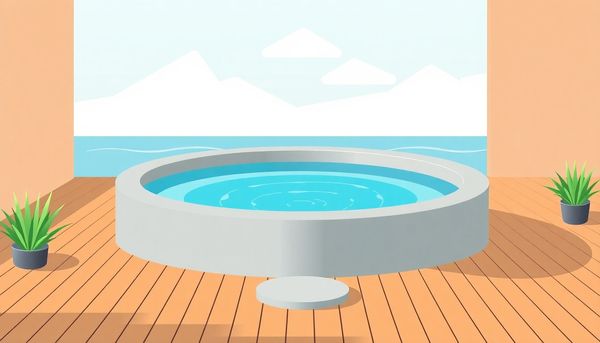
Stepping into the world of hot tub maintenance, one quickly realizes the unsung hero is the humble filtration system. This vital mechanism tirelessly works in the background, ensuring that your relaxation experience remains sublime and uncontaminated. When considering the filtration basics, it's important to appreciate how these systems keep the water pristine.
At the heart of this operation lies the filter itself, responsible for sieving out impurities. Most modern hot tubs are equipped with suction type filters, conveniently positioned at the surface for easy upkeep. These filters, larger in size, require regular attention but reward you with straightforward maintenance. On the flip side, some older or alternative models might employ pressure filters. These are more compact, housed within sealed canisters, and necessitate less frequent but more intricate servicing.
Besides the physical filters, hot tubs also rely on circulation pumps. These secondary pumps function continuously, ensuring a steady movement of water through the filter even when the main system is at rest. This perpetual circulation is crucial, as it prevents stagnation and promotes ongoing cleanliness.
The control system, generally accessible via a panel, allows you to manage filtration settings. Depending on your model, you may adjust water flow or select from preset filtration modes tailored to usage levels. Mastering these controls ensures optimal performance, especially during high bather loads.
Ultimately, understanding these components equips you with the knowledge to maintain a clear and inviting hot tub environment. So, the next time you sink into your hot tub, you can enjoy the tranquility, assured of the tireless work happening beneath the surface.
Hot tub filtration systems are much like an unsung hero, tirelessly ensuring every soak is as clean and refreshing as the last. The type of filter you choose can significantly impact this process. Suction filters reign as the most popular choice among hot tub enthusiasts. Positioned conveniently on top, they offer easy access for routine upkeep. Their larger size often makes them more efficient at capturing debris, though they do demand regular attention to remain effective.
On the flip side, pressure filters, while less common, especially in newer models, have their own set of advantages. Often hidden within a sealed canister, they can withstand higher pressures and thus require less frequent maintenance. However, when the time comes for a check-up or replacement, they might test your patience with their complex setup. This system is more common in older hot tubs, where durability and longevity take precedence.
Ultimately, the decision between these filters boils down to personal preference. Would you rather roll up your sleeves often with a simple task or tackle a more complex job less frequently? It’s akin to choosing between a pet that needs daily walks versus one that’s more independent. Each has its own charm and challenges, but both strive to deliver the same outcome: a pristine, inviting hot tub experience.
Maintaining a hot tub filtration system is akin to nurturing a prized garden, where consistent care and attention yield a flourishing result. The heart of your hot tub's cleanliness relies on this understated hero, laboring tirelessly to keep water pristine. My own experience taught me that neglected filters quickly transform from silent guardians to clogged barriers, compromising water quality and inviting unwanted odors.
Begin with a routine check-up. Whether your system uses a suction-type filter or the less common pressure filter, regular inspection is crucial. For suction filters, which are conveniently accessible, it's wise to clean the filter every two to four weeks, depending on usage. A gentle rinse under a hose often suffices, but for deeper cleans, soaking in a special filter cleaner rejuvenates it to peak performance. Pressure filters, typically more challenging to access, require less frequent attention, but when service is due, be prepared for a bit of elbow grease.
Don’t forget the control panel, your command center for adjusting filtration cycles. Familiarize yourself with its settings to optimize performance, particularly during periods of heavy use. An efficient cycle means less strain on your filter and cleaner water overall.
Lastly, make it a habit to replace filters annually or as recommended by your hot tub manufacturer. This investment not only extends the life of your hot tub but ensures every soak is as refreshing as the last. Maintaining your filtration system doesn’t just protect your hot tub—it safeguards your personal oasis.
Optimizing filtration cycles in a hot tub might seem like a technical chore, but it’s a key step toward crystal-clear relaxation. Think of it as setting a rhythm for your hot tub, ensuring the water remains pristine. The magic lies in fine-tuning how often and how long your filtration system runs. Balancing these cycles is crucial; too little, and contaminants build up, too much, and you’re wasting energy.
Start by understanding your hot tub’s unique needs. Some models allow you to tweak the filtration schedule directly via the control panel. This flexibility means you can adjust the cycle based on how frequently you use the tub or how many guests you entertain. For instance, after a weekend gathering, consider extending the cycle to whisk away extra debris brought in by additional bathers.
Even in periods of minimal use, maintaining a regular filtration pattern is essential. Think of it as your hot tub's daily exercise, keeping everything in top condition. For those with variable speed pumps, using lower speeds during off-peak times can enhance efficiency without compromising cleanliness. It’s akin to a steady jog rather than a sprint, conserving energy while maintaining functionality.
Ultimately, the goal is to harmonize these cycles with your lifestyle, ensuring your hot tub remains a sanctuary of clean, warm water. With a bit of attention and adjustment, your filtration system will hum along smoothly, letting you enjoy your soak without a second thought about cleanliness.
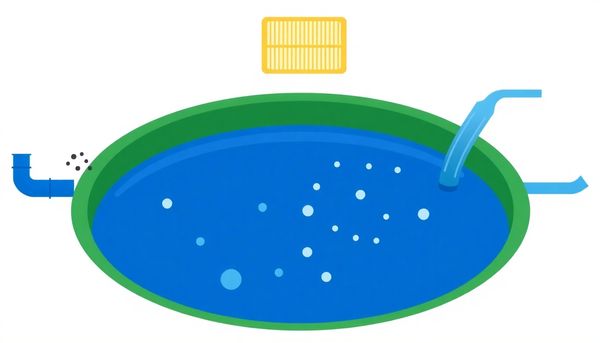
A hot tub's serene appeal lies not just in its warmth but in the gentle dance of water as it circulates. This movement, orchestrated by the circulation system, is not merely cosmetic; it's a vital process ensuring the water remains pristine. Think of the circulation pump as the heart of your hot tub, continuously moving water through the filtration system even when the main pump rests. This constant flow prevents stagnation, which can lead to unpleasant odors and bacterial growth.
Consider your hot tub's jets as the muscles driving this system—strong, yet requiring balance. They push water through the filters, ensuring debris and contaminants are captured. The rate at which this happens, known as the flow rate, is crucial. A higher flow rate means more water is cleaned at any given time, facilitating a purer soak. However, there’s a sweet spot: too much force could lead to wear on the components, while too little might leave the water less than optimal.
Personal experience has shown that understanding and adjusting these settings, especially during heavy use, can make all the difference. For instance, during a family gathering, increasing the circulation ensures clarity despite higher bather load. Regularly monitoring and fine-tuning this system not only maximizes efficiency but enhances the longevity of your hot tub. By optimizing water circulation, you ensure every soak is as refreshing and rejuvenating as the first.
Tending to your hot tub’s filtration system might seem like just another chore, but it’s a key step towards a consistently blissful soak. Imagine the satisfaction of sinking into a tub where the water sparkles with clarity. To maintain such an inviting environment, understanding your filter’s needs is paramount. Whether you’re dealing with a suction-type or a pressure filter, regular check-ups are essential.
Start by establishing a cleaning routine. For suction filters, a simple rinse with a garden hose every couple of weeks can work wonders. It’s like giving your filter a refreshing shower to shake off accumulated dirt. Don’t forget to occasionally treat it with a filter cleaner for a deeper cleanse. Meanwhile, pressure filters, though less frequent in their demands, benefit from a meticulous approach when maintenance time arrives. Disassemble carefully, clean each part thoroughly, and reassemble with precision.
Monitoring water quality is equally crucial. A quick weekly water test can alert you to any chemical imbalances or undetected issues. Adjusting chemicals promptly ensures the filtration system isn't overburdened by excess contaminants. Additionally, setting your filtration cycles to match the frequency with which your hot tub is used can significantly enhance performance.
Remember, a diligent maintenance schedule not only prolongs the life of your filter but also enriches your hot tub experience. With each cleaning, you’re investing in future moments of relaxation, free of worry and full of joy.
Circulation pumps in hot tubs quietly work behind the scenes, ensuring the water stays fresh and inviting. Unlike the main pump that powers the jets, the circulation pump operates continuously, pushing smaller volumes of water through the filtration system even when the hot tub is at rest. This constant, gentle flow is crucial as it prevents water from becoming stagnant, a state that could lead to bacterial growth or unpleasant odors.
Remember that time when you left your hot tub unattended for a few days, only to find the water murky? A well-maintained circulation pump can help prevent such scenarios. By keeping water in motion, these pumps facilitate consistent filtration and chemical distribution, minimizing the risk of contamination. They're like the heart of your system, quietly keeping things in balance.
Choosing to efficiently manage your circulation pump can also extend its lifespan and optimize energy use. Some hot tubs allow you to adjust the pump's speed, tailoring it to your specific needs. For instance, during periods of heavy use, you might increase the circulation for more thorough cleaning. Conversely, during off-peak times, a slower setting could conserve energy.
Ultimately, understanding and optimizing your hot tub’s circulation pump not only enhances water cleanliness but also transforms your hot tub experience into one of pure, uninterrupted relaxation.
Mastering the water flow in your hot tub is akin to conducting an orchestra, where each instrument plays a role in achieving perfect harmony. The ability to control the water flow precisely is a key component of maintaining a pristine and inviting hot tub environment. The control system, often nestled within an intuitive panel, is your baton, allowing you to dictate the tempo of filtration cycles.
From the get-go, this panel offers a range of options. Whether you're setting filtration timings or adjusting the flow rate, it’s all at your fingertips. For those who love a personalized experience, some systems allow adjustments based on bather load. This means you can ramp up filtration during a lively evening with friends, ensuring that the water remains as clear as the laughter echoing across the bubbles. On quieter nights, dial it back to conserve energy and maintain efficiency.
Moreover, it’s not just about cleanliness; it’s about creating an optimal soaking experience. For instance, reducing the water flow during a long soak can enhance tranquility, letting you savor the gentle embrace of the water without the rush of interruptions. By understanding and utilizing these controls, you become the maestro of your hot tub, ensuring every soak is not only clean but tailored to your preferences. A well-managed flow not only safeguards your investment but enriches every moment spent within your watery retreat.
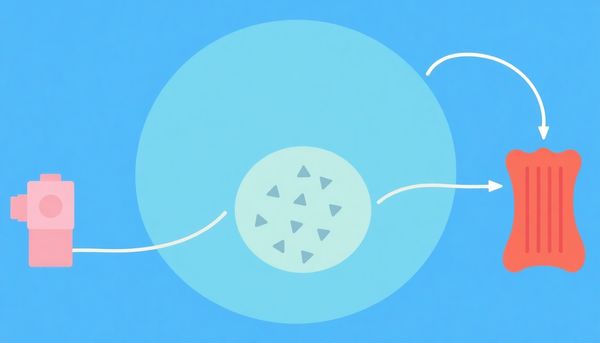
Selecting the perfect filter for your hot tub is akin to choosing the right shoes for a long walk. Just as the wrong choice can lead to blisters, an ill-suited filter can leave your hot tub in less than pristine condition. There are two main contenders in the world of hot tub filtration: suction type and pressure filters. Each boasts its own merits, much like a hearty debate between coffee and tea enthusiasts.
Suction type filters are the stalwarts of modern hot tubs. Positioned conveniently on top, they allow for easy cleaning—imagine a friendly neighbor who always brings your mail to the door. Maintenance is straightforward, requiring regular attention but rewarding you with consistently clean water. On the other hand, pressure filters, though less common, provide a robust option. They thrive in older models or high-pressure systems, akin to a classic car that might need a bit more elbow grease but delivers a reliable ride.
When deciding, consider your lifestyle. Do you prefer minimal fuss, with frequent but simple maintenance? Suction filters might be your match. If you're willing to tackle more challenging upkeep for less frequent interventions, the pressure filter could be your companion. Think of it as choosing between a trusty bicycle or a high-maintenance sports car. Both get you where you need to go, but the journey is distinctly different. The choice, ultimately, reflects how you balance convenience and capability in your quest for crystal-clear waters.
Imagine soaking in your hot tub, surrounded by clear, pristine water—thanks, in large part, to its diligent filtration system. This essential component is like a silent guardian, tirelessly working to ensure your water remains inviting and safe. At its heart, the system functions by circulating water through a filter designed to capture and remove unwanted particles and contaminants. The effectiveness of this process can be attributed to the type of filter your hot tub employs—either suction or pressure.
In the realm of hot tub filters, suction types reign supreme. These filters are prominently positioned for easy access and maintenance. Their size can be a boon, as larger filters often mean more efficient cleaning. Yet, regular upkeep is crucial to retain their effectiveness. In contrast, pressure filters, though less common, are robust and adept at managing higher pressures. They require less frequent maintenance, but when duty calls, the task can prove more challenging.
Beyond the filters themselves, the circulation pump plays a pivotal role. Operating almost invisibly, this secondary pump ensures water keeps moving through the system, even when your main pump takes a break. This constant motion prevents stagnation, promoting a cleaner environment.
Ultimately, understanding your hot tub's filtration system empowers you to maintain it effectively. With this knowledge, you're well-equipped to ensure your relaxing soaks remain a pleasure, unmarred by murky waters.
Keeping your hot tub's filter in peak condition is not just a chore but an essential step to ensuring crystal-clear, inviting water. A friend once likened filter maintenance to caring for a pet—ignore it, and you’ll feel the consequences. It's not just about aesthetics; a clean filter ensures your hot tub operates efficiently, reducing the risk of costly repairs.
The first step in filter maintenance is regular cleaning, a task that can’t be skipped. For suction-type filters, which are the most common, a simple rinse under a garden hose every week can work wonders. Imagine the difference in water clarity after just a few minutes of effort—it's like night and day! If your schedule is tight, consider marking your calendar for monthly deep cleans using a filter cleaner solution. This removes oils and calcium deposits that a simple rinse can't.
For those with pressure filters, less frequent but more thorough sessions are needed. While they can handle more pressure, these filters require careful disassembly. You may recall a weekend where you spent a couple of hours on hands and knees, wrestling with the canister. However, the reward of seeing your hot tub sparkle again makes it worthwhile.
Lastly, don't forget the importance of timely replacement. Check your filter's lifespan—most last a year, but some wear out faster. By staying on top of this, you'll ensure that your hot tub remains a haven of relaxation, free from unwanted intrusions.
Deep in the mechanics of your backyard oasis lies a crucial decision: choosing between suction and pressure filtration for your hot tub. Each system has its merits and quirks, akin to selecting the right tool for a task. With suction filters, you're looking at a setup that prioritizes ease of access. These are typically mounted on top, allowing for straightforward maintenance—ideal if you prefer a hands-on approach. Their larger size means more frequent upkeep, yet this is a manageable task with regular practice.
On the other hand, pressure filters offer a different narrative. Commonly found in older models, they boast a compact design within a sealed canister. This means they can handle higher pressures, yet they require less frequent intervention. When the time for maintenance does arrive, be prepared for a more complex task. It's a bit like choosing between a quick sprint and a marathon; both have their challenges, but the reward of clean, safe water is worth the effort.
Reflect on what suits your lifestyle. If frequent but simple tasks fit your schedule, suction might be your ally. For those with a penchant for less frequent but more involved maintenance, the pressure system may align well. Neither choice is inherently superior; it’s about finding the rhythm that complements your routine.
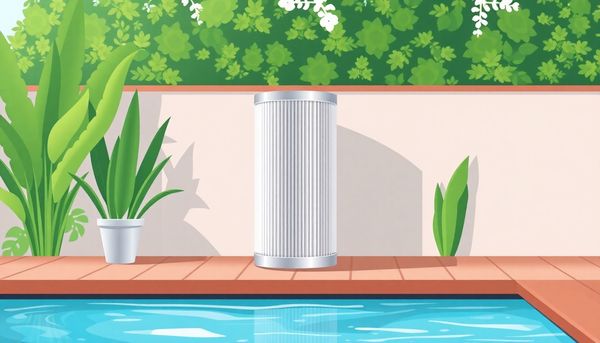
The art of mastering your hot tub’s filtration settings can elevate your spa experience from ordinary to exceptional. Imagine adjusting the system to match your specific needs, whether preparing for a solo soak after a long day or hosting a backyard party with friends. The control panel, typically nestled within easy reach on your tub, acts as your command center. Here, you have the power to determine everything from the rate of water flow through the filtration system to the duration and frequency of filtration cycles.
Each hot tub model offers varying degrees of customization. Some advanced systems enable you to fine-tune the filtration schedule based on your usage patterns, ensuring pristine water even during peak usage. For instance, you might increase filtration frequency after a weekend gathering to tackle increased bather load, preventing murky water and unpleasant odors. On lazy weeks with minimal use, you might dial back, saving on energy costs while maintaining water clarity.
Remember, getting familiar with your hot tub’s filtration controls is akin to learning your car’s dashboard. At first, it might seem daunting, but with a little practice, you’ll navigate the settings with ease. Regularly consulting the user manual can reveal hidden features and tips for optimal performance. Ultimately, understanding these controls not only keeps your hot tub in top condition but also ensures every dip is as refreshing as the last.
Grasping the intricacies of filtration cycles can transform your hot tub experience from ordinary to extraordinary. Ever noticed how a hot tub feels extra refreshing after a thorough clean? That’s the magic of an optimized filtration cycle at play. Every hot tub owner dreams of crystal-clear water, and the right filtration rhythm is key to achieving this.
First, understanding your hot tub's unique requirements is essential. Some models allow you to adjust the duration and frequency of these cycles, depending on how often you use your tub. For instance, during a family gathering weekend, you might need more frequent cycles to cope with increased usage. Conversely, during quieter times, scaling back can save energy without compromising water quality.
Incorporating personal schedules can also help. Think about setting cycles to run at night when energy costs may be lower, or when the hot tub is not in use. This ensures that by morning, your tub is fresh and ready for a relaxing soak.
Consider experimenting with the balance of filtration time and pump speed. Sometimes, a simple tweak can enhance efficiency, giving your filtration system the boost it needs to keep every soak spotless. By tailoring these cycles to your lifestyle, you not only extend the life of your hot tub but also enhance every moment spent in it. It’s about making technology work for you, ensuring every dip is nothing short of perfect.
Selecting the right filter type for your hot tub is akin to choosing the heart of your water's cleansing process. Not all filters are created equal, and understanding their differences is key to maintaining pristine water. Two main contenders dominate this realm: suction filters and pressure filters.
Suction filters, the popular choice for many modern hot tubs, are positioned conveniently at the top. Their size and accessibility make them easy to clean, much like a friend who is always there when you need them most. Though they require more frequent attention, the maintenance is generally straightforward and doesn't demand much expertise. If you prefer a straightforward approach to upkeep, suction filters might just be your trusty companion.
On the flip side, pressure filters, while less common, offer their own set of advantages, particularly for those with older hot tubs. These are encased in sealed canisters, often found in separate skimming units. They're designed to endure more pressure, which means they don't require as much routine maintenance. However, when the time does come to give them some TLC, the task can be a bit more complex—like that one difficult puzzle you only tackle when absolutely necessary.
Ultimately, the decision lies in your hands. Would you rather have a filter that requires frequent, simple touch-ups, or one that demands occasional, more intense attention? Consider your lifestyle and maintenance preferences to make a choice that keeps your hot tub running smoothly, ensuring every soak is a safe and refreshing experience.
Have you ever stood by your hot tub, watching the ripples dance across the surface, and wondered how to fine-tune its filtration flow for optimal cleanliness? Adjusting the flow isn't just about ensuring sparkling water; it's about tailoring your experience to match your usage.
First, consider your hot tub's control panel—your command center. If you’ve recently hosted a splashy party or notice a heavier bather load, you might need to crank up the filtration frequency. Many modern hot tubs allow you to adjust the duration and timing of filtration cycles. It’s akin to tuning an instrument; the right settings make all the difference in performance.
For those with older models or simpler systems, manual adjustments may involve tweaking valves or adjusting the flow rate directly on the pump. My own hot tub required a delicate balance; too much flow, and the water jets became overly aggressive, too little, and the water clarity suffered.
Regularly inspecting and cleaning your filters aids in maintaining the ideal flow. A clogged filter restricts water movement, akin to trying to drink through a blocked straw. Keeping a spare filter on hand can be a lifesaver, ensuring no interruption in your tub's cleanliness.
Ultimately, understanding your hot tub’s unique requirements transforms maintenance from a chore into a craft, ensuring every soak is as delightful as the last.
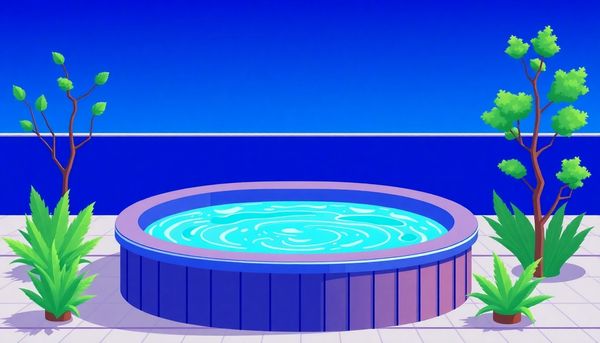
A hot tub’s filtration system, much like a diligent gardener tending to a prized rose bush, requires consistent care to thrive. Ensuring your system maintains peak efficiency is essential to enjoying crystal-clear waters. Regular maintenance, akin to pruning and watering, keeps everything running smoothly.
Begin with the filter itself, your first line of defense against contaminants. Depending on whether you have a suction or pressure-type filter, maintenance will vary. For suction filters, frequent cleaning, typically every month, is key. Remove the filter, rinse it with a hose, and occasionally soak it in a filter cleaner to eliminate stubborn oils and minerals. Pressure filters, while less frequent in their demands, require a more thorough approach due to their compact design. A careful inspection and gentle scrub can prevent clogs and ensure efficient operation.
Next, don't overlook the circulation pump. Though it quietly works behind the scenes, its continuous operation is vital. Check for any signs of wear or unusual noises, which could indicate that it’s struggling. This proactive attention can save headaches down the road.
Lastly, familiarize yourself with the control panel, the brain of your system. Regularly review filtration settings, adjusting based on usage patterns. A heavy bather load might necessitate increased filtration cycles to preserve water quality. By understanding and anticipating your hot tub's needs, you safeguard its longevity, ensuring each soak is as pure as the first.
Maximizing the performance of your hot tub's filtration system is akin to fine-tuning a musical instrument; with the right adjustments, harmony is achieved. Think of it as ensuring your water stays consistently pristine, making every soak delightful and safe. Begin by maintaining a regular schedule for cleaning and replacing your filters. A clogged filter can’t do its job properly, much like trying to breathe through a blocked straw. Depending on usage, monthly rinsing and quarterly deep cleanings with specialized filter cleaner can keep the system in top shape.
Beyond cleaning, consider the filtration cycle settings. Many hot tubs offer customizable settings that allow you to adjust the cycle based on usage frequency and bather load. If your hot tub is the center of weekend gatherings, increase the filtration duration to handle the additional load. On quieter weeks, a reduced cycle may suffice. This adaptability not only ensures cleaner water but also prolongs the life of your filtration components by preventing overuse.
Additionally, water chemistry plays a crucial role. Regularly test and balance pH and alkalinity levels. Imbalanced water can lead to scaling or corrosion, which can obstruct filter performance. Investing in a quality water testing kit or using digital testers can save headaches down the line. By being proactive and attentive, your filtration system can operate efficiently, providing you with crystal clear water every time you step in.
#
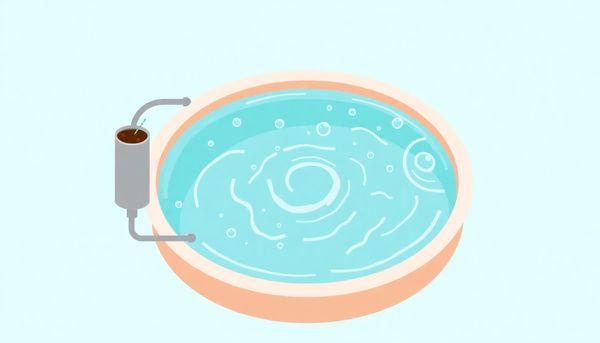
Selecting the right filter for your hot tub is akin to choosing the best pair of shoes for a long journey. Each type offers distinct benefits and challenges, so understanding your options is key. Suction type filters, often perched conveniently at the top of the tub, are the frontrunners in modern hot tub designs. Their generous size makes them easier to clean, and their accessibility means maintenance can be integrated seamlessly into your routine. However, they demand regular attention to maintain peak performance, akin to a reliable friend who checks in often.
On the other hand, pressure filters present a different approach. Commonly found in older models, these filters boast a compact cartridge snugly concealed within a sealed canister. They’re the workhorse, able to withstand higher pressures without frequent intervention. Yet, when maintenance is due, it can become a more involved task, much like assembling a complex puzzle.
Neither filter is inherently superior; the choice boils down to personal preference and lifestyle. Are you someone who prefers regular, manageable tasks, or do you lean towards fewer, potentially more intensive efforts? Reflect on your maintenance habits and select the filter that aligns with your approach. This decision is pivotal, ensuring your hot tub remains a pristine sanctuary, free from the unwelcome grit of daily life.
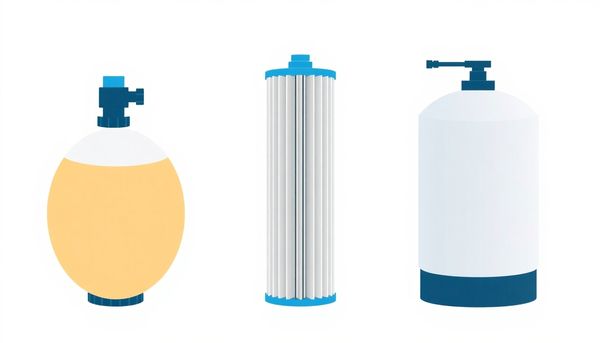
This article provided insights into maintaining your pool. Start your pool care journey today!
Want to become a pool maintenance expert? Our free Pool School course covers everything you need to know about pool care. From basic maintenance to advanced troubleshooting, you'll learn how to:
Join over 10,000 pool owners who have already transformed their pool care routine. Get started with our free Pool School course today!